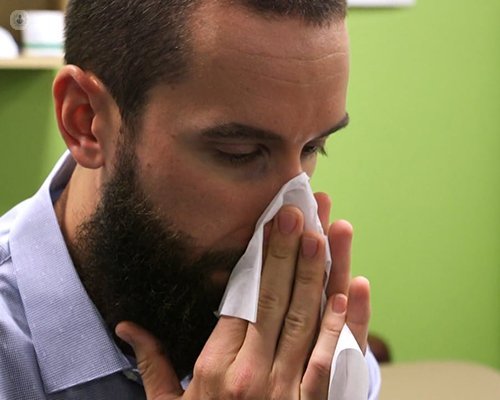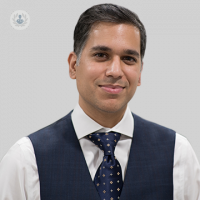Nasal congestion: why can't I breathe well through my nose?
Written by:To know the different causes of your nasal breathing problems, you need to go to the ENT Specialist. This specialist is the only doctor who has the appropriate technical means - the nasal fibroscope - to examine the inside of your nose and make a correct diagnosis. Without seeing the inside of the nose the diagnosis may not be correct. After this initial exploration, other examinations may be necessary, such as allergy tests.

The most common reasons for nasal congestion:
Diverted nasal partition
The nasal septum separates both nostrils in the midline of the nose. Occasionally, spontaneously, during growth, the development of the face or due to trauma, a deviation in the position of the septum and nostrils occurs, forming an "S" and causing unilateral or bilateral nasal breathing difficulty.
Treatment: The only effective treatment to resolve these deviations is surgery. This surgery is performed from the inside of the nostril, leaving no marks or external cuts.
Chronic rhinitis
An inflammation of the nasal mucosa and an increase in the size of the turbinates.
The turbinate is a structure found in the nostrils. The centre is composed of bone and the function is to condition the air we breathe making sure it arrives in optimal condition in the lungs: it filters, heats and moistens the air that we inspire. An increase in size of the turbinates (hypertrophy), especially of the inferior ones, causes respiratory nasal difficulty.
The turbinate increases in volume and there is less free space to breathe. In addition to breathing badly through the nose, it is common to have transparent mucus (runny nose), decreased smell, nasal itching and sneezing. Most of the time chronic rhinitis is caused by an allergy. Allergies are more frequent in spring due to pollen (hay fever), but can occur at any time of the year due to dust mites etc.
Treatment: the treatment for chronic rhinitis is drugs, namely antihistamines and nasal sprays with corticosteroids. Occasionally, medication doesn’t improve the condition and minimally invasive surgery such as Turbinate Radiofrequency surgery can be performed to reduce the size of the turbinates.
In this surgery, high frequency energy is applied by the introduction of an electrode through each nostril. It is done as an outpatient procedure, and the patient is able to go home a few hours after the operation. There are few risks and few complications, and the results are usually satisfactory.
Chronic rhinosinusitis and nasal polyposis
These are inflammations and infections of the mucosa and paranasal sinuses that cause nasal respiratory difficulty, abundant mucus and pain or facial pain.
Treatment: the treatment is initially with medication, with the option of surgery for cases with symptoms that are difficult to control and repetitive. Surgical cases are treated by nasal endoscopic surgery through the nostrils without external scars.


